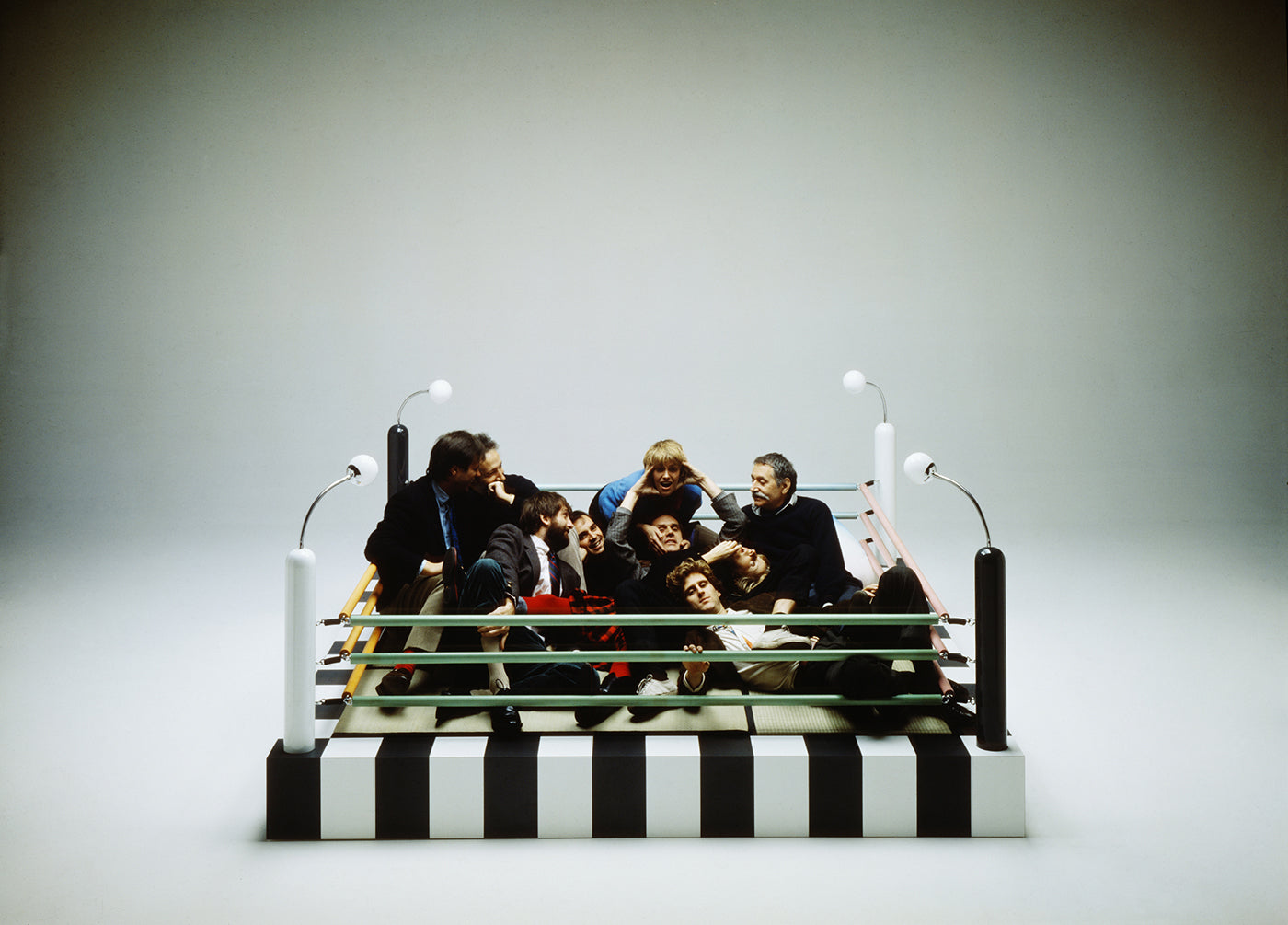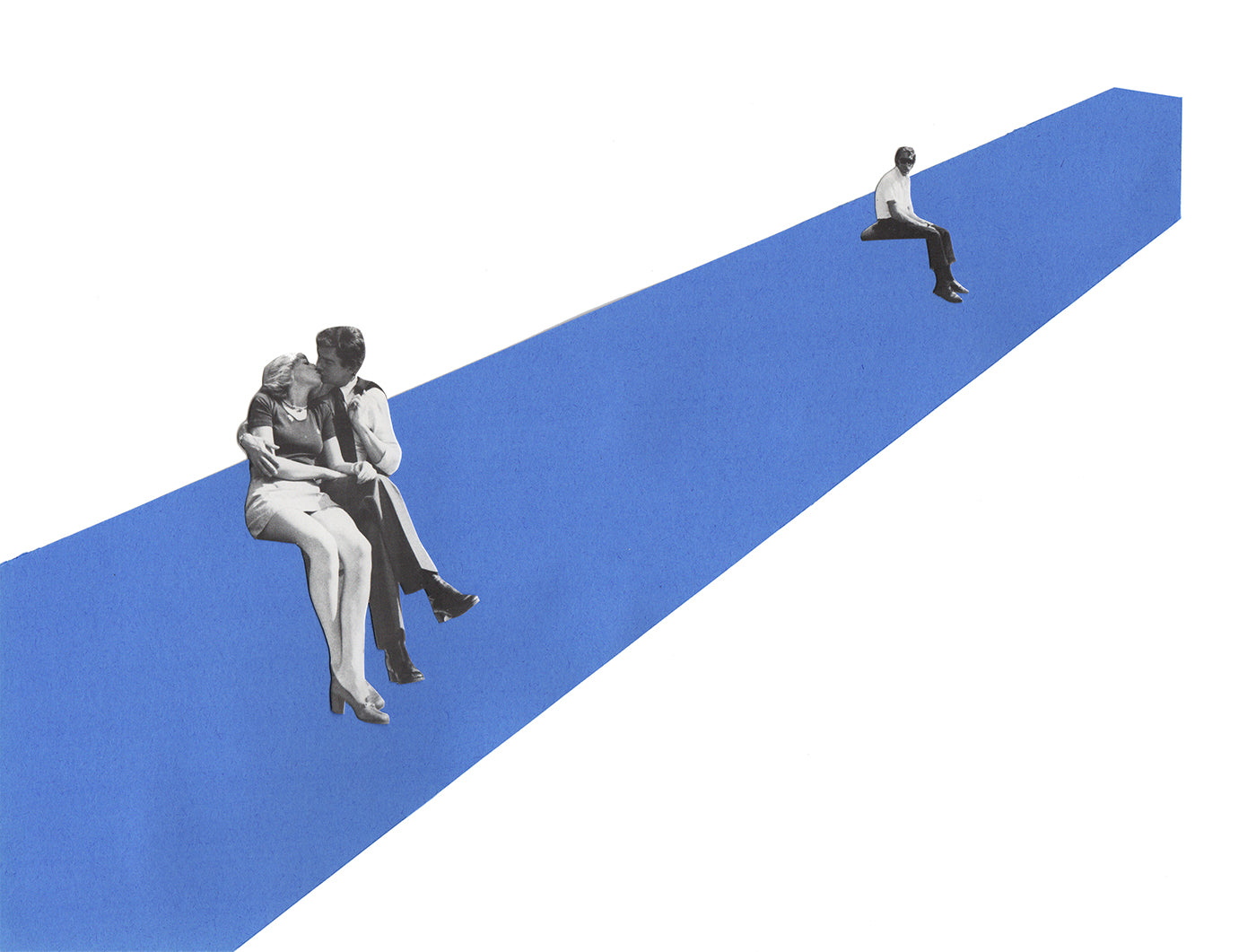
How Memphis Milano Shook The Design World
Relive the iconic postmodernist legacy of Memphis Milano on its 40th anniversary
Functionalism just wasn't enough for a young troop of Milano designers and architects who were gathered in the apartment of Ettore Sottsass on December 11, 1980. These revolutionary mavens wanted to command attention and communicate a message, they wanted to challenge the status quo and show that design could be emotional, humorous, and sensual. Listening on loop to Bob Dylan's 1966 single Stuck Inside of Mobile with the Memphis Blues Again, this collective coined 'Memphis,' a movement with a two-fold reference to ancient Egyptian pharaohs and the Tennessee birthplace of Aretha Franklin and Elvis Presley. What they gave birth to that evening was a cultural phenomenon of the 1980s and one of the most notable movements in Italian Design history.
The world at that time was in a daze over the glamor of Italian fashion, it was an era of vintage Valentino and the rise of Versace. "Made in Italy" was elevating upmarket designers and companies onto the world stage, small businesses were able to adapt on request, unlike larger organizations who needed to retool their machines to modify designs. Unconventional and offbeat bold contours were in. Italian fashion was taking the world by storm and it opened a chasm for a design movement with new ideals, elegance, and irrational shapes. Sottsass and his young guests could see the changing world, and within a few days, a radical collection of design objects were discussed and drafted.

The Carlton sculptural piece was designed by Ettore Sottsass in 1981 as a room divider, becoming much more than just a functional piece, thanks to its silhouette enriched with an eclectic combination of vivid colors. (Photo: Memphis Milano)
A large collection began to form over the course of a few months, an explosive eruption of colors and experimental shapes were about to take modern design into another reality, one that championed freedom and appeared to have been cooked up in an altered state of consciousness. Ettore Sottsass was the ringleader that evening, but in on the vision were Aldo Cibic, Matteo Thun, Marco Zanini, Martine Bedin, Michele De Lucchi, Nathalie Du Pasquier, and George Sowden. Ten months later they presented their first collection Milan’s Salone del Mobile. 55 products were shown under the artistic direction of Barbara Radice. Also joining the debut collection were the likes of Peter Shire, Hans Hollein, and Shirō Kuramata.
It was pre-internet surrealism with a playful dysfunction, it captured elements of gaming and the digital age on the horizon. It was emotive designs on a commercial scale, a rejection of modernism's austerity, and their vision opened a Pandora's box of Pop Art. Thousands of people crammed into the gallery, the overspill outside reportedly blocked city traffic, and the press was stunned and didn't know exactly how to react. It was praised and scathed at the same time—a pattern that persisted for decades and continues to split the room today.


The Plaza dressing table designed by Michael Graves in 1981 was an instant sensation and became one of the most collectible items of the generation. Fashion designer Karl Lagerfeld famously had a Memphis Apartment in Monte Carlo, he called the movement the "Art Deco of the '80s." (Photo: Memphis Milano)
Their debut caused a commotion in the design world. Synthetic materials and Terrazzo collided in a cocktail mixture of Art Deco, Bauhaus, and Pop Art. Memphis Milano challenged notions of taste and arching principles of good design. Their streamlined vision of design wasn't accessible for the masses, only a few devoted high-profile customers were able to buy designs in bulk, including David Bowie and Karl Lagerfeld, who furnished his Monte Carlo apartment. The influence of the movement stretched to all corners of the planet, from vibrant architecture in southern India to tableware in countless chic homes.
From its original inception to the end of the collective, Memphis Milano was a short-lived phenomenon that lasted the best part of eight years. The movement was sudden both in its impact and lifespan, but its influence was generational. Despite a heralding wall of critics, it was arguably the most synonymous aesthetic of the 1980s. Its ludicrous and fabulous signature use of color inspired the graphics of MTV, Miami Vice, and the cult TV show Saved by the Bell to name a few.

One of the biggest collectors of Memphis Milano, Karl Lagerfeld essentially dedicated his Monte Carlo apartment to its designs. Here we see the Suvretta bookcase designed by Ettore Sottsass in 1981, Pierre table designed by George Sowden in 1981, Riviera chairs designed by Michele De Lucchi in 1981, Treetops lamp designed by Ettore Sottsass in 1981. (Photo: Jacques Schumacher, Memphis Milano)
“The history of culture has always been characterized by revolutions and revivals, and periods of austere minimalism have always alternated with more eclectic maximalisms,” says Alberto Bianchi Albrici, who now owns the Memphis company and has done so since 1996. Ettore Sottsass and his tribe of industry shakers stole the show, then walked away from the limelight. In recent times there has been a renaissance of the aesthetic spurred by digital artists and social platforms.
Founding Memphis member Martine Bedin wrote: “The same obsession always; can we imagine a new world by drawing another chair, another table, another light, another vase.” What these individuals communicated to the world was that a new world can exist, as long as you can imagine it. This invitation to envision can be seen in the digital utopias of dozens of artists today, including London-based Peter Tarka, someone known for his highly stylized universes. His conceptualized creations are beautifully illustrated with powerful colors and textures. His architectural elements are a subtle reference to the movement and show how playful interiors could defy the recent dominance of minimalism. Tarka's complex compositions are studied in Dreamscapes & Artificial Architecture, a book that offers a glimpse into dreamlike environments free from functionalism and the physical world. The digital world’s disruptive nature is an undercurrent of the movement, their confidence paved the way for other bold and boundary-pushing interruptions of design and taste.


In 1981, Andrea Branzi created the Gritti bookcase in plastic laminate, wood, metal, and glass. A key member of the Studio Alchimia, founded in 1976, he went on to associate with the Memphis Group in the 1980s. This was a pivotal piece of design that challenged all existing parameters of living and function. (Above photo: Memphis Milano).
Today the Memphis movement lives as a relic to the ideals and visions discussed in the apartment of Ettore Sottsass. The collectible pieces are rare and highly sought-after. They continue to inspire and have found a renewed relevance in an age that seeks an alternative to minimalism, taste, and conventional design. To coincide with the 40th anniversary of Memphis Milano, a celebration of the group is taking place in the MK Gallery. On a reflection of its internal influence, the gallery's director Anthony Spira said: “The Memphis Group dreamt of shattering the codes of the 20th-century. Their vision was to drop a bomb on the rules of design and to renew the language of shapes and colors that make up our environment. As a result, Memphis changed the course of design, fashion, architecture, music, and film."
Find out more about Dreamscapes & Artificial Architecture or see Karl Lagerfeld's Memphis apartment in Inside Utopia.


